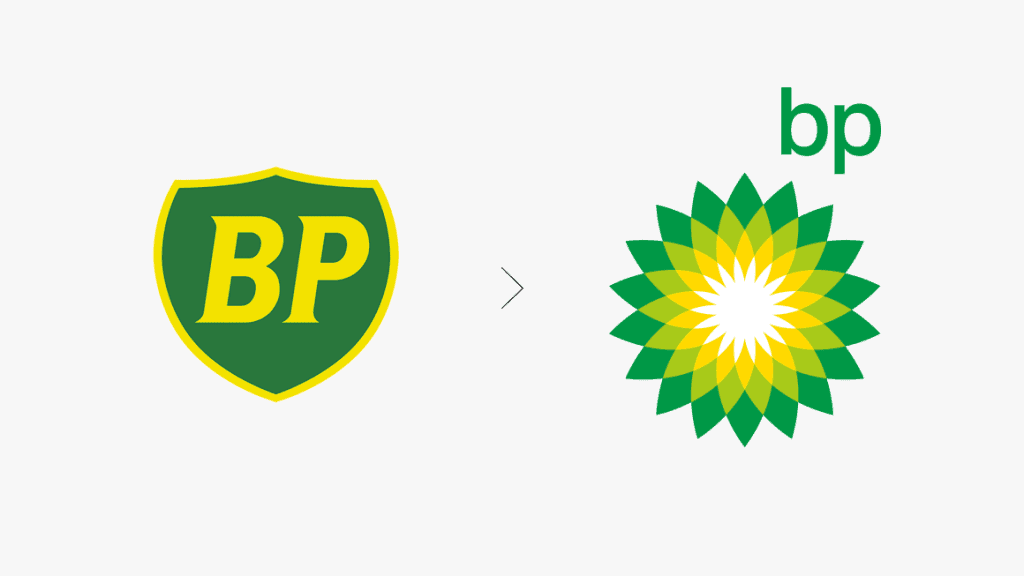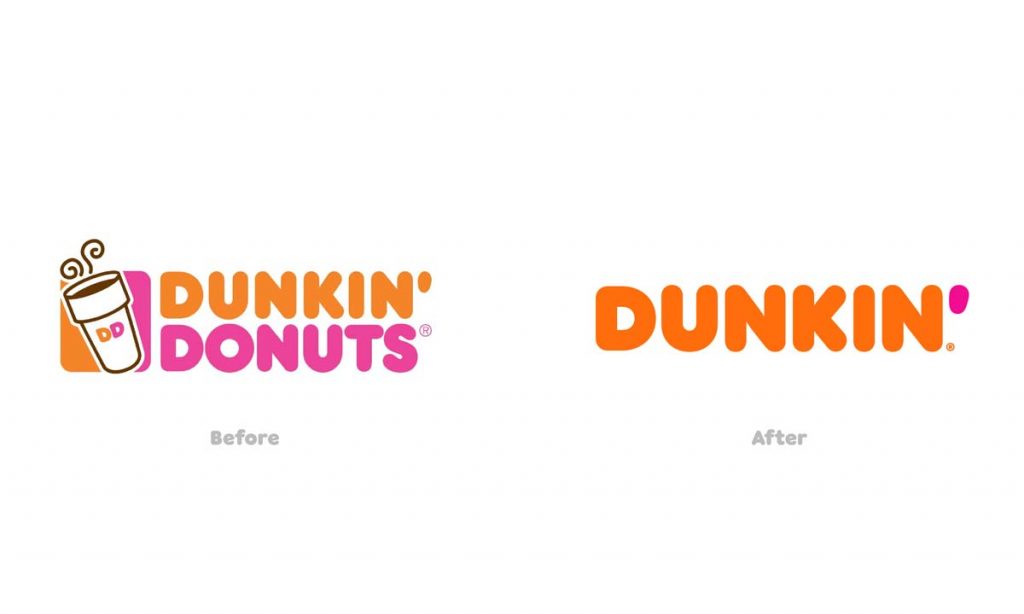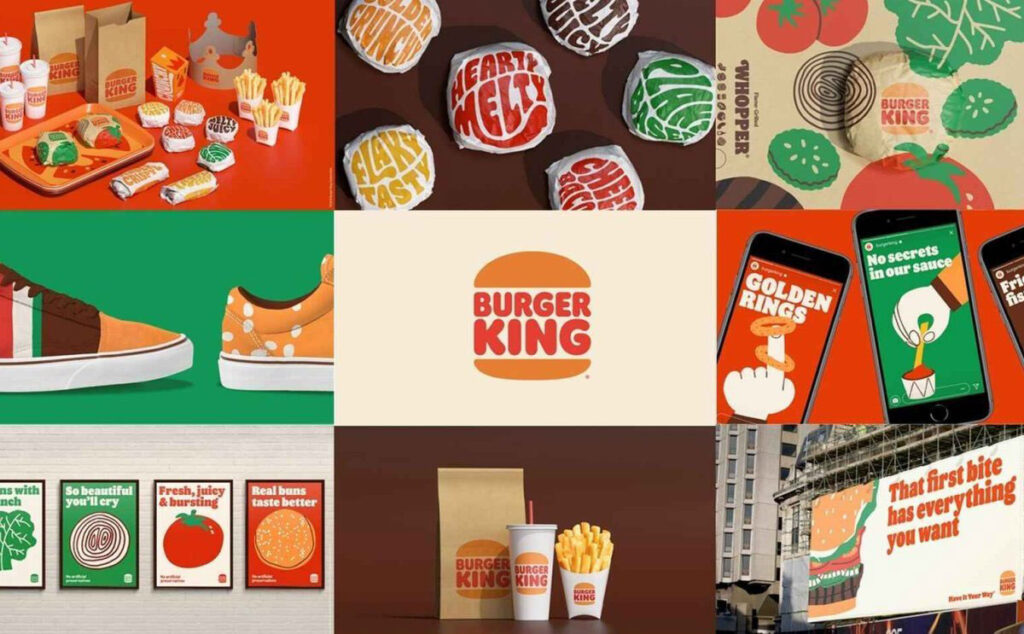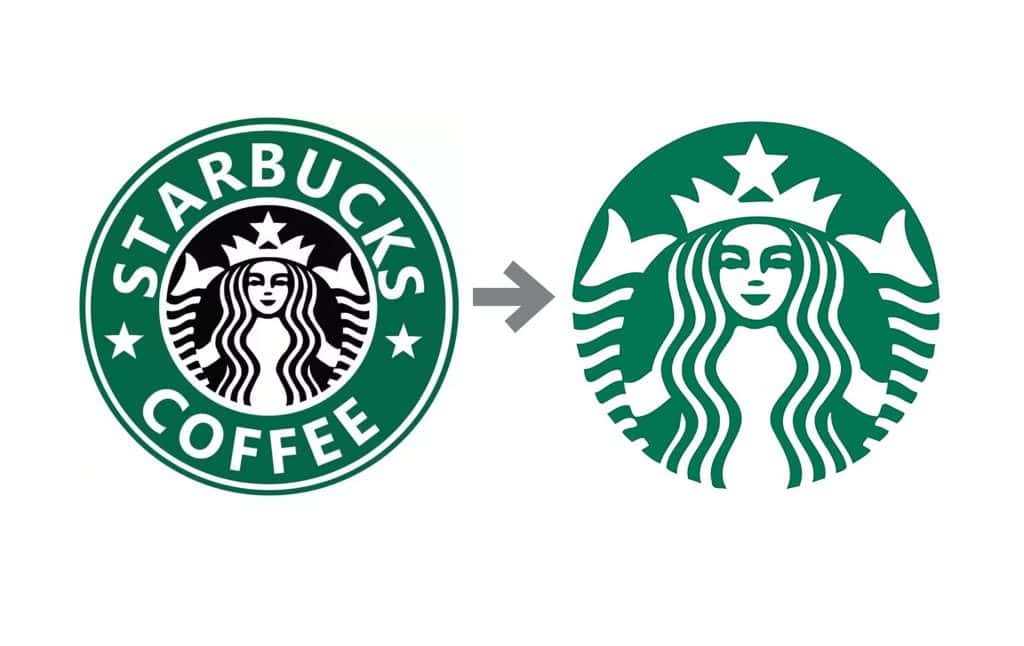Rebranding vs Brand Refresh: Choosing the Right Strategy
Every business reaches a point where they need to take a hard look at their brand. It could feel stale, outdated, or misaligned with the company's goals. Or the competition has changed, and your brand no longer stands out.
You have two options when this happens: a complete rebrand or a brand refresh. On the surface, these seem similar. However, they are very different strategies with distinct purposes, processes, and outcomes.
Choosing between a complete rebrand and a refresh is a significant decision that requires careful thought. Rushing in without fully understanding the differences can lead to wasted time and money, or worse – a new brand that confuses customers and fails to achieve your goals.
This article will compare a rebranding vs brand refresh so you can make the wisest choice for your business. We'll cover:
- Defining rebranding vs brand refresh
- When to choose a complete rebrand
- When a brand refresh is the better option
- Step-by-step guides for both strategies
- Rebranding and refreshing brand elements
- The costs of rebranding compared to a refresh
- Measuring the success of both approaches
Let's start by clarifying what exactly rebranding and brand refreshing entail.
Table of Contents
Defining Rebranding vs Brand Refresh

What is Rebranding?
A rebrand is a complete overhaul of all visual, verbal, and cultural brand elements. The goal is to create an entirely new brand that resonates more with your target audience.
Rebranding impacts:
- Brand name
- Logo design
- Tagline
- Messaging and voice
- Visual identity – colours, fonts, imagery
- Tone and personality
- Customer experience
- Internal culture
Rebranding gives your brand a whole new life. You are reimagining your entire business from the ground up.
Some key reasons companies choose to rebrand include:
- Central business model pivot – For example, Weight Watchers rebranded as WW when shifting to overall wellness.
- Merger or acquisition – American Airlines rebranded to represent their expanded business after merging with US Airways.
- Negative brand perception – To distance itself from its oil industry ties, BP rebranded from British Petroleum to Beyond Petroleum.
Rebranding allows you to hit the reset button when substantial strategic changes require a brand transformation.
- Kenney, Bill (Author)
- English (Publication Language)
- 240 Pages – 07/05/2023 (Publication Date) – Lioncrest Publishing (Publisher)
What is a Brand Refresh?
A brand refresh keeps the heart of your brand intact while updating visual elements and messaging. You are preserving your brand equity while modernising and refining for the current market.
Refreshing your brand typically involves:
- Logo updates – simplification, colour changes, styling updates
- New tagline and messaging to better communicate your value
- Visual identity updates – new colour palette, typography, graphic styles
- Website redesign with updated navigation, content, and functionality
- New marketing materials and branded assets
The goal is to polish and refine the brand to feel fresh and relevant, not wholly reimagine it. You want to trigger familiarity and loyalty while also creating excitement and interest.
Common reasons for a brand refresh include:
- Appearing dated, stuffy, or out-of-touch
- Losing differentiation from competitors
- Poor conversion of branding to digital
- It needs a modern or energetic appeal
- Merging multiple brands under one unified identity
For companies going through incremental evolution rather than radical transformation, a refresh can re-energise your brand.
When to Choose a Complete Rebrand

Rebranding is the right choice when your brand strategy or business model has changed enough that your current brand no longer works.
Here are four critical scenarios where investing in a complete rebrand is worth considering:
Your Brand Has a Negative Image
Has your brand developed negative associations that affect perceived trust and quality? Poor reviews, legal issues, unethical practices, or tone-deaf marketing can hurt your brand reputation.
A complete rebrand gives you the chance to reset public perception. You can distance yourself from past negativity by creating a new visual identity and messaging.
Be sure brand challenges stem from external factors rather than your product/service. Rebranding won't solve quality issues that need to be addressed first.
Your Business Strategy Has Changed Significantly
If you've pivoted your business model, rebranding helps align your brand with new strategic goals.
For example, a clothing brand shifting from couture to off-the-rack would warrant rebranding to lose pretentious vibes. Or a company moving from B2B to B2C may need a more mainstream, customer-focused brand.
Rebranding allows you to re-conceptualise your entire brand experience to match the new strategy.
You've Expanded Into New Markets or Merged Companies
Are you taking your business global or merging with another company? In both cases, you need a brand that appeals to new audiences.
Your original branding likely won't translate or encompass new markets or partnerships. Rebranding gives you a fresh start to unite different customer bases.
Cultural nuances, languages, and brand personalities must be considered to succeed globally or as a new entity.
Your Brand Lacks Differentiation in a Crowded Market
Has your industry become saturated, making it hard for customers to understand and connect with your brand? Rebranding can help you stand out.
Stepping back and re-evaluating your brand identity, voice, and experience can reveal new ways to differentiate. You can highlight unique benefits customers crave, but competitors ignore.
Just ensure you still solve customer needs – a flashy rebrand means nothing without real value behind it.
When a Brand Refresh is the Better Option

In some cases, a complete rebrand is overkill. You may need some polishing and updating rather than starting entirely from scratch.
Here are four situations where a brand refresh makes more sense than a pricey, time-intensive rebrand:
Your Brand Still Aligns With Business Strategy
A rebrand is unnecessary if your core business model and target audience have stayed the same. Your brand likely needs refreshed messaging or aesthetics.
For example, a food brand with the same vision but a dated logo could be refreshed with a redesigned logo and a new tagline. The equity of the current brand still works.
You Want to Maintain Brand Recognition
Do you have strong brand awareness and loyalty you want to retain? A brand refresh lets you update aesthetics while keeping recognisable elements like your name, logo shape, and brand voice intact.
Dropping a familiar brand altogether may confuse customers and dilute hard-won equity. A refresh strikes a balance between new and familiar.
You Have a Tight Budget
Rebranding is a costly, resource-intensive undertaking. If funds are limited, opting for a more affordable brand refresh keeps the integrity of your brand while sprucing it up.
Focus on high-impact updates like new messaging, a website overhaul, or modernised logo styling. Skip the full rebrand bells and whistles.
You Don't Have the Time for a Lengthy Rebrand
Similarly, rebranding takes serious time – often 6-12 months from start to finish. If you need quicker results, aim for select refresh updates you can implement swiftly.
That could be modernising your website and graphics or an engaging social media campaign to re-energise your brand. Quick wins that don't require a total rebrand.
Step-by-Step Guide to Rebranding Successfully

If you've decided rebranding is the right strategic move, here is a process to ensure it succeeds:
Phase 1: Set Goals and Conduct Research
Clearly define what specific problems you're trying to solve or goals you want to achieve with the rebrand. What new brand traits or emotions do you want to evoke?
Back this with quantitative and qualitative research on your market, buyers, brand perceptions, and competitors. Gather complex data on what your new brand needs to achieve.
Phase 2: Review Your Current Brand Identity and Equity
Take an audit of your existing brand strategy and equity. Look at past brand research and performance metrics.
Analyse what equity you want to retain or evolve vs. what needs to be changed entirely. This will shape your rebranding strategy.
Phase 3: Craft Your New Brand Strategy
Using a shared understanding of goals, research learnings, and current equity, start envisioning your new brand strategy.
Work with stakeholders to define your desired personality, voice, visual identity, messaging, and experiences. Create a brand story and strategy guide.
Phase 4: Design Your New Brand Identity
With a clear creative brief, start bringing your new brand to life – name, logo, imagery, colour palette, typography, tone, etc.
Train talented designers to experiment with concepts until you find the correct visual identity. Ensure it aligns with strategy while distinguishing your brand.
Phase 5: Launch Your New Brand Externally
Plan a strategic rollout to introduce your new brand to customers. Make sure it is a cohesive experience across touchpoints.
Give customers context on the reasons for and benefits of the change. Focus on an emotional connection over just aesthetic details.
Phase 6: Implement the Rebrand Internally
Don't neglect the internal rebrand change management process: update materials, internal comms, office environments, HR practices, and training.
Rally employees around the new brand vision and equip them to deliver on it. This is key to making the external rebrand stick.
Phase 7: Measure Results and Optimise
Track performance metrics early and often. How does your new brand impact conversion rates, traffic, sales, or hiring?
Be ready to optimise any elements that may be underperforming quickly. With a significant change, you'll likely need minor tweaks.
Step-by-Step Guide to a Successful Brand Refresh

If rebranding seems like overkill, here are steps to refresh your brand:
1 – Clarify Business Strategy and Brand Gaps
Start by revisiting your core business and brand strategy. Have any goals or target audiences shifted?
Identify any gaps where your current brand isn't aligning. Where does it feel dated or fail to resonate?
2 – Prioritise Key Elements to Refresh
With gaps defined, decide which brand elements have the most significant impact or need a refresh.
The logo? Typography? Color palette? Website design? Tagline? Messaging hierarchy? Don't spread efforts thin.
3 – Modernise Visual Brand Identity
Tackle visual refresh first, starting with logo, colours, and typography – these have the most public-facing impact.
Keep elements recognisable but modernised. Get creative on refreshed brand imagery and graphics.
4 – Update Website and Marketing Collateral
Refresh your website, advertising, packaging, signage, sales materials, and other collaterals with new visuals.
Current customers will start noticing the refresh, which may attract new audiences.
5 – Refine Messaging and Voice
Look for messaging that needs clarifying or better targeting. Write new copy and taglines that align with the strategy.
Freshen up tone and personality – warmer? More confident? Sharper wit? Update voice guidelines.
6 – Promote the Refresh Internally
Get employees excited about the refresh and equip them to be brand ambassadors. Update internal materials and environments.
Focus communication on how the refresh better achieves goals and makes their jobs easier.
7 – Spotlight the Refresh Externally
Promote the refresh through campaigns, PR, events, etc. Share the news on social media and your website.
Frame the changes around better fulfilling customer and company needs if questioned.
Rebranding vs Refreshing Brand Elements

Now that the overall processes are transparent, let's look at how you might approach refreshing or rebranding specific brand elements:
Brand Name
Rebranding allows a brand name change, while a refresh keeps the existing name.
A name change is rare but can work wonders if your old name carries baggage. Just ensure customers understand the transition.
Logo Design
Rebranding means an entirely new logo design. A refresh modernises a logo but retains some recognisable elements.
Keep part of the icon shape, font, or colour scheme. Or simplify a dated complex logo into something cleaner.
Tagline
Rebranding calls for a brand new tagline fitting the new strategy. Refreshing looks to update or refine an existing slogan.
Try shortening, clarifying, rephrasing or re-contextualising your tagline to feel current.
Messaging
Rebranding requires starting a message strategy from scratch. Refreshing tailors existing messages for greater precision.
A refresh can also add new messaging to highlight evolved features or services if needed.
Visual Identity
A rebrand dictates a wholly new visual identity. A refresh modifies the existing identity for freshness – updated palette, typography, etc.
Use a refined colour palette and sleek new fonts. Streamline branding for flexible use across platforms.
Tone of Voice
Rebranding may call for a new personality or voice. A refresh aims to refine the existing tone of voice.
For example, boost energy levels, increase or decrease formality, or tighten messaging.
Customer Experience
Rebranding allows reimagining the entire customer journey. A refresh enhances touchpoints rather than reinventing them.
Look for friction points to eliminate and moments to insert delight. Updates don't need to be sweeping to impact the experience.
The changing depth depends on whether rebranding or refreshing is the right strategic choice based on your business goals and brand gaps.
The Costs of Rebranding vs Brand Refresh

Budget is often a significant factor in deciding between rebranding and refreshing. Here's an overview of the typical costs involved with each.
Rebranding Costs
Because it requires change across the entire organisation, rebranding has significant costs:
- Brand strategy: $40,000 – $100,000
- Brand research, analysing existing brands, developing new techniques and creative briefs.
- New visual identity: $150,000+
- Name, logo, colour palette, typography, imagery, graphic elements. Multiple rounds of design concepts.
- Implementation across touchpoints: $500,000+
- New branded templates, signage, uniforms, packaging, digital assets, website, sales materials, swag, and environments.
- Marketing the new brand: $250,000 – $1M+
- Ad campaigns, social media marketing, PR, events, loot, and partnerships.
- Internal adoption: $100,000 – $300,000
- Training, updated documents, town halls, and new office design elements.
In total, rebranding often costs well over $1 million. The investment is warranted when rebranding aligns with your strategy. But for other situations, it may be overkill.
Brand Refresh Costs
Refreshing costs significantly less than a complete rebrand since you aren't changing everything:
- Brand audit and research: $15,000 – $30,000
- Assess current brand health and identify gaps.
- Logo refresh: $5,000 – $15,000
- Modernise existing logos and create updated visual guidelines.
- New visual identity elements: $20,000 – $40,000
- Updates to colour palette, typography, iconography, and graphics.
- Website refresh: $40,000 – $150,000+
- Design updates, new content and pages, and technical improvements. The cost rises for a complete rebuild.
- Marketing materials: $20,000 – $100,000
- Update select print collateral, branded templates, and digital assets.
- Promoting the refresh: $15,000 – $50,000
- Social media campaigns, PR, events, swag
You can expect a brand refresh to cost $100,000 to $500,000, making it the more affordable.
Look for high-impact changes on a budget by prioritising digital and customer-facing touchpoints over internal materials. You can refresh selectively over time as budgets allow.
Measuring the Success of Rebranding vs Refresh
Defining success metrics upfront and tracking results to justify rebranding or refresh efforts is critical. Here are key performance indicators to monitor for both:
Rebranding Metrics
- Brand awareness and favorability – Are brand familiarity and positive perception growing?
- Market share – Are you increasing your share against competitors?
- Consideration and conversion – Are interest and sales/leads rising?
- ROI on rebrand investment – Calculate revenue compared to rebrand costs.
- Employee adoption – Do employees understand and believe in the new brand?
Brand Refresh Metrics
- Brand relevance – Does a refreshed brand resonate more with target audiences?
- Website traffic – Are visitor numbers rising after the redesign?
- Sales velocity – Has time from prospect to sale shortened?
- Social engagement – Are followers/shares up following brand refresh promotion?
- ROI on refresh investment – Are revenues outweighing brand refresh costs?
Track metrics before, during, and after your rebrand or refresh. Look for tangible upticks that prove it is achieving the desired business impact.
Rebrand vs Brand Refresh: Which is Right for You?
- Hardcover Book
- Miller, Donald (Author)
- English (Publication Language)
- 240 Pages – 10/10/2017 (Publication Date) – HarperCollins Leadership (Publisher)
Deciding whether to rebrand or refresh requires an honest analysis of where your brand is lacking and what your business goals need.
Just because you are tired of your current branding does not necessarily mean a costly rebrand is needed. But a refresh may not go far enough if your brand badly misses the mark.
Here are three final points to help you decide:
1. Get objective outside perspectives.
It can be hard to view your brand. Ask target audiences, employees, and outside marketing experts to assess your brand health. They can provide objective insight to determine if refreshing or rebranding makes more strategic sense.
2. Weigh benefits against disruption.
Rebranding brings significant disruption despite its potential upside. It risks confusing customers and diluting hard-won equity—refreshing aims to minimise disruption while still getting a boost. Assess your appetite for drastic change.
3. Be ready to commit time and resources.
Neither a rebrand nor refresh is a quick, easy fix. They both require investing ample resources, from budgets to staff time. Ensure you can fully support the level of investment the option you choose demands.
Approach rebranding or refreshing as a growth opportunity, not just a cosmetic facelift. With proper strategy and execution, both can unlock tangible business value.
5 FAQs About Rebranding and Brand Refreshing
Still, deciding between rebranding vs refreshing? Here are answers to 5 frequently asked questions:
How long does it take to rebrand vs refresh a brand?
A rebrand typically takes around 6-12 months from start to finish. A brand refresh can often be completed in 2-5 months.
Does a brand refresh require new branding guidelines?
Not always – if you aren't drastically changing visual identity, existing guidelines may need minor updates. Rebranding requires creating new approaches.
Can we rebrand on a tight budget?
Complete rebranding on a rock-bottom budget is extremely difficult. But you can take a phased approach, starting with higher-impact elements like logo and website.
Should we rename our company when rebranding?
A name change is optional but risky. It loses existing brand equity. Change the name only if it is wholly misaligned with a new brand. Updating with a descriptor can be a safer option.
How do we know if a refresh or rebrand is working?
Conduct market research before and after the changes to assess brand perception and equity impact. Track performance metrics to quantify business impact.
Reimagine Your Brand With The Right Strategy
Evolving market landscapes demand that brands constantly evaluate themselves. When your brand loses stride, rebranding and refreshing offer ways to get back on track.
But understanding their distinct purposes, processes, costs, and risks is crucial to choosing the wisest path. Avoid change for change's sake alone.
With a strategic, research-backed approach, repositioning your brand through a rebrand or refresh allows you to connect in new ways with audiences and own the future. Just be sure it stems from – and supports – your business vision and objectives.
Last update on 2024-05-12 / Affiliate links / Images from Amazon Product Advertising API


